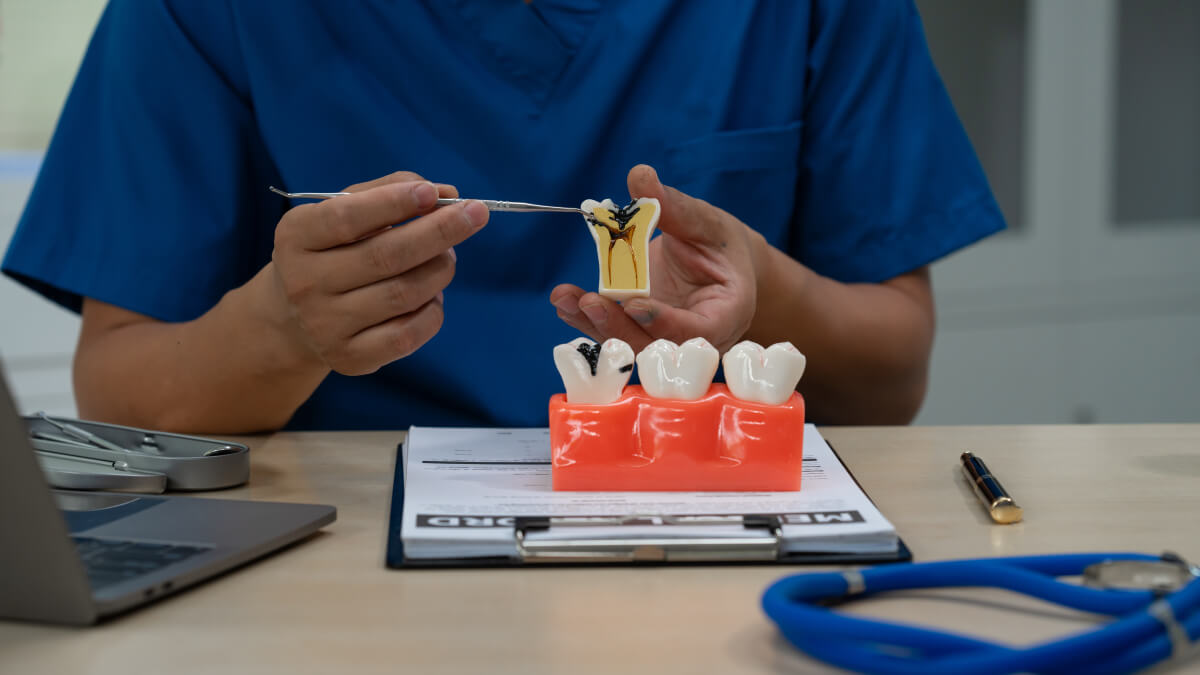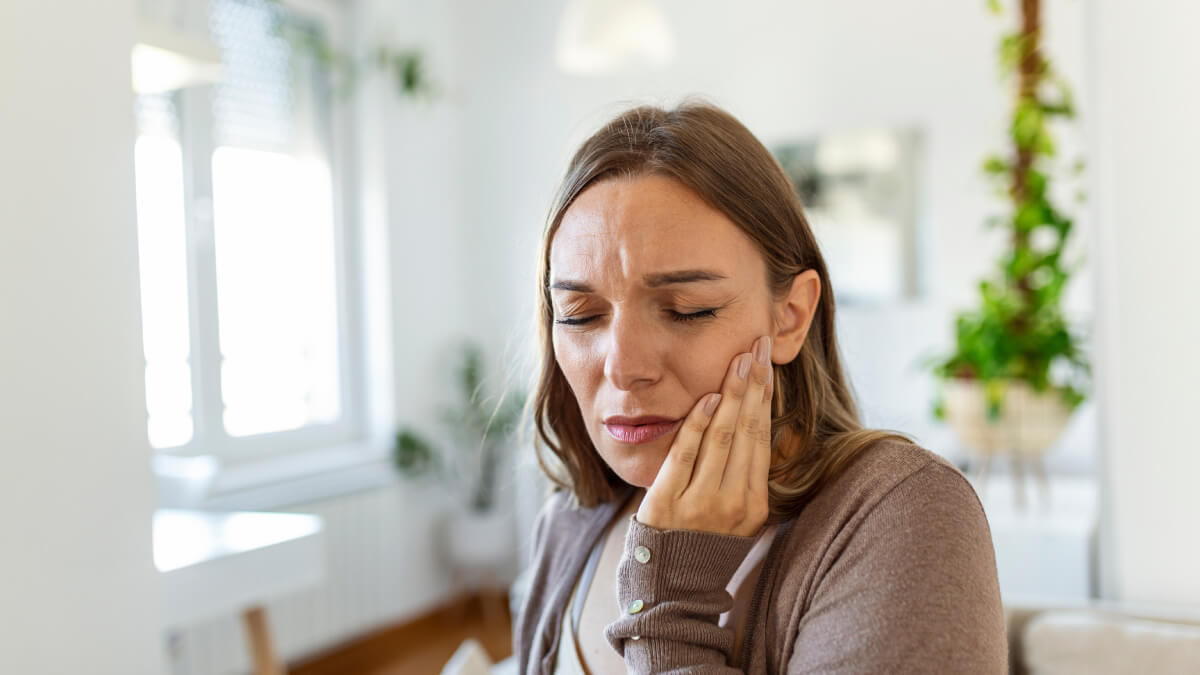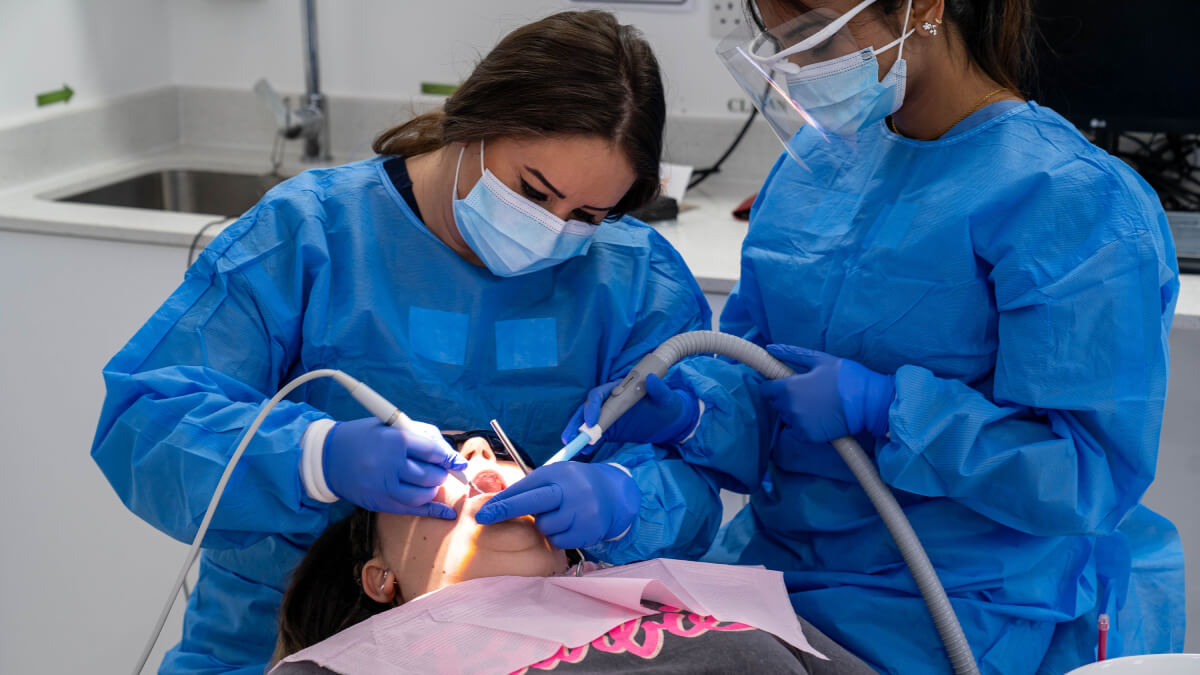How To Stop Tooth Decay
- Author: Diamond Dental
- Date: November 12, 20242024-11-18T09:56:132024-11-12T12:34:03



Despite affecting around eight in ten adults in the UK, tooth decay is often left untreated by those suffering from it. In fact, dental treatments across the board are on a steady decline as more and more people are neglecting their oral health. However, if left untreated, dental conditions like tooth decay can quickly lead to tooth loss, gum disease and tooth abscesses. That’s why, in this article, we’ll use our expertise as a leading dental clinic in Milton Keynes to explain how to stop tooth decay before it causes significant harm to your health.
There are many reasons treatment rates for tooth decay are so low, from non-noticeable symptoms in the early stages to a general lack of understanding. The World Health Organisation estimates two billion people suffer from tooth decay and cavities worldwide, with many of these cases being in the early stages and able to be reversed. So, keep reading to learn the early signs of tooth decay and the preventative measures you can take to stop its development.

Over time, your teeth are worn down by certain types of food that stick to their surface. The longer these foods are left on the teeth, the more acidic your mouth becomes, and cavities may begin to form. This process is called tooth decay. Typically, foods high in sugars and carbohydrates cause the most issues for your teeth, including sweets, fruits, bread, or even milk. The most common symptoms of tooth decay are:

There are usually four stages of tooth decay, each more harmful than the last. They are as follows:
Stage One: Initial Demineralisation
The outer layer of your teeth is called the enamel. It’s the hardest tissue in your body and is mostly made up of minerals. When acidic plaque builds up on the surface of the teeth, the enamel begins to dissolve and demineralise. During this stage, you’ll likely notice white spots on your teeth where the plaque has worn away the enamel.
Stage Two: Enamel Decay
If your enamel continues to break down, the white spots will begin to turn brown. In this second stage, the enamel begins to deteriorate, and cavities begin to form. It’s common for people to get tooth fillings at this point to stop their cavities growing larger.
Stage Three: Dentin Decay
If the cavities continue to grow larger, they will begin to damage the dentin. Dentin sits underneath the enamel and is much more sensitive to acid damage. That’s why tooth decay accelerates rapidly at this stage, and those suffering from it will begin to feel extreme sensitivity when they drink hot, cold, or sugary liquids. If dentin decay is identified early on, it can be fixed with a filling. If substantial damage has occurred, your dentist will likely remove the decayed portion of your tooth and place a crown over the remaining tooth structure.
Stage Four: Pulp Damage
In the final stage of tooth decay, the pulp (the layer below the dentin) will begin to decay. The pulp is the soft inner-most layer of the tooth, which can easily become infected once exposed. Infection of the pulp can lead to an abscess, which will cause severe pain that can spread to the rest of your jaw and face. You may also experience the following symptoms:
At this stage, root canal or extraction of the tooth are the only ways to relieve the pain and stop further decay.

Cavities can be hard to identify in the early stages of tooth decay. However, you may notice small white marks on your tooth enamel. As the cavity worsens, these spots will become brown or black. It can be easy to confuse cavities with stains, but these are some of the key differences:
In addition to the changes in colour, your gums can be a key indicator of tooth decay. Gingivitis, or inflammation of the gums, is a known cause of a decaying tooth. So, if you begin to notice tenderness in the gumline or a tooth that is starting to ache a bit, this could be a warning sign that a cavity is starting to develop.

As mentioned above, tooth decay is caused by the acidity in dental plaque. Foods high in carbohydrates and sugars cause dental plaque because they attract bacteria to the mouth. This bacteria breaks down the food, leaving acids behind.
In addition to these kinds of food, poor brushing habits are a leading cause of tooth decay. Brushing at least twice a day is the only way to clear the plaque you’ve accumulated throughout the day. Over time, the plaque calcifies and becomes harder to clean, so it is essential to maintain consistent brushing habits.

The recommended treatment for tooth decay is dependent on its stage. Here are your treatment options based on the progression of your decay:
Initial Demineralisation
In this stage, tooth decay can still be reversed with fluoride. Fluoride is a naturally occurring mineral that is used to strengthen bones. It is found in most toothpaste, and drinking water in some parts of the UK. Your dentist can provide a fluoride treatment, usually in the form of a gel or varnish. This treatment will strengthen enamel, making it more resistant to the acids produced by plaque bacteria.
Enamel Decay
At this stage of decay, cavities are often present. Dentists use fillings to treat cavities. When giving you a filling, your dentist will first clear any areas of decay and then fill the hole with resin, ceramic, or dental amalgam.
Dentin Decay
Dentin decay may also be treated with a filling, or a crown may be required in more advanced cases. A crown covers the top portion of your tooth and prevents further damage. Before a crown can be placed, your dentist will remove the decayed area and some healthy tissue to ensure it fits properly.
Pulp Damage
When tooth decay has reached the pulp, a root canal is usually necessary. During this procedure, the damaged pup is removed before the cavity is cleaned and filled in. A crown is then placed on the affected tooth.
Abscess
If an abscess has formed, a root canal will be needed. This will help remove the infection and seal the tooth. In severe cases, the affected tooth may need to be removed completely. Antibiotics will be prescribed to kill the bacteria.

There are many ways to prevent tooth decay, including:

Tooth decay can progress very quickly without the affected individual noticing until the latter stages of decay. That, combined with an increase in sugar consumption, is why it’s become one of the most common dental issues throughout the world. However, with effective brushing habits, a healthier diet, and other preventative measures, tooth decay can often be reversed.
If you’re concerned about your oral health or want a dentist in Milton Keynes to assess whether you’re suffering from tooth decay, don’t hesitate to get in touch with our team. Our highly experienced team would be more than happy to support you, whatever your dental needs.
Feel free to submit your details below, and we’ll be in touch as soon as possible!

Achieving straight teeth is a common aspiration for patients from their early teenage years all the way up into adulthood, and thankfully, technological and material advancements have meant we now have a diverse range of options for patients seeking to enhance the alignment of their teeth. So, in this article, we’ll explain how to get […]

Dental bridges have become one of the most popular and effective solutions for those dealing with missing teeth. In fact, according to Public Health England, one in ten people attending dental practices in the UK have dental bridges or implants. With these numbers on the rise, we urge each patient at our dental clinic in […]